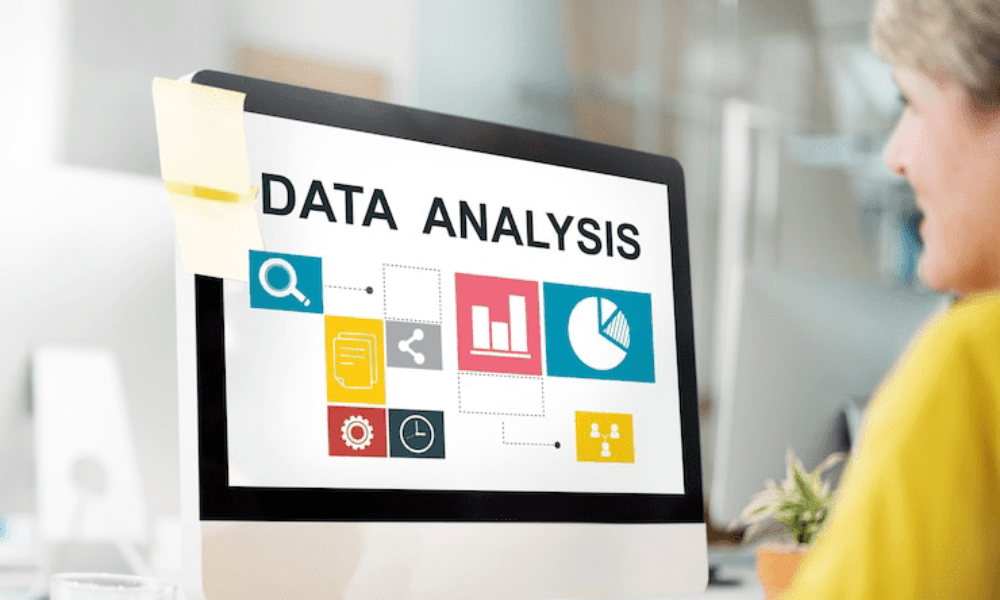The unbreakable bonds that form the internet chain are so powerful that before anyone can unsend the message they have sent, the other person already receives a notification. Powerful social media platforms like Facebook, Instagram, and Twitter drive the journey you, and I embark upon daily. From sharing news to watching memes, we all use social media, and some also reap unique benefits from its existence.
Today, it is essential to acknowledge that social media has spread like wildfire that cannot be extinguished quickly. From leisure time interests to full-time professions, people have extracted much help from social media sites that only expand as time passes. Technological advancement has taken over the social media journey as well. The increasing use of big data and artificial intelligence in the social media environment has advanced all our expectations, and thus, its scope has also widened.
Big data analytics is a powerful tool for collecting, analysing and storing large amounts of data. It allows businesses and organisations to gain insights into customer behaviour, trends in the market, user preferences and more. The role of Big Data in Social Media Marketing is essential for understanding consumer engagement with content, tracking user activities over time and creating targeted campaigns based on audience interests. By utilising Big Data tools and platforms, marketers can access real-time information about their target audiences, effectively creating highly personalised marketing experiences that meet customers’ needs. With this data-driven marketing approach, companies can make well-informed decisions that increase ROI from their social media efforts.
Identifying the Value of Big Data Analytics
Big data analytics can help identify valuable insights that are otherwise difficult to uncover. For example, it can provide insights into customer preferences and behaviour, allowing marketers to tailor their campaigns accordingly. Additionally, big data analytics can track user activities over time and create targeted campaigns based on audience interests. Companies can better understand their target audiences by combining this information with traditional marketing methods such as surveys and focus groups on crafting more effective messaging.
Additionally, big data analytics is beneficial for measuring the success of social media campaigns over time. With real-time information about users’ interactions with content and engagement levels across platforms, marketers can analyse what works best for different audiences and adjust their strategies accordingly. This helps ensure that each campaign reaches its maximum potential in terms of reach and ROI by choosing the correct target audience at the right time to deliver the right message.
Overall, utilising Big Data tools provides businesses with invaluable insight into customer behaviour patterns, enabling them to make clear decisions about how best to reach their target market through digital channels like social media marketing. By leveraging these powerful analytical capabilities, companies can maximise ROI from their digital investments while simultaneously creating meaningful experiences for customers that they will remember long after they have left your website or app.
Tools and Platforms
Analytics platforms are invaluable tools to help companies gain insights into their customer base and optimise the performance of their digital campaigns. These platforms provide a comprehensive view of user behaviour, allowing marketers to measure website traffic, conversion metrics, customer journeys and more. With access to this detailed information, businesses can identify areas for improvement or gaps in current strategies that could be addressed with targeted content or campaigns.
Integrated tools for data analysis are essential for creating an effective strategy from the gathered data. These tools allow marketers to quickly visualise collected information to uncover patterns and trends that would have been otherwise difficult to detect without them. The type of analysis depends on the platform being used. Still, some of the most popular ones include predictive analytics (to understand customer profiles better) and sentiment analysis (to gauge customers’ opinions about particular topics). By combining these powerful analytical capabilities with traditional marketing methods like surveys and focus groups, companies can create highly personalised marketing experiences based on real-time consumer feedback, resulting in improved ROI from social media efforts.
Techniques
Combining multiple datasets is one of the most powerful techniques used in big data analytics. By pulling together numerous sources of information, businesses can gain a more holistic view of their customers and audience trends. This allows for creating highly targeted campaigns based on insights from each dataset. Additionally, businesses can better measure customer journeys and track user activities over time by connecting different data types. This helps them identify where conversion rates may drop or areas for further optimisation.
Real-time tracking of user activities also plays an essential role in understanding customer preferences and behaviour patterns. Advanced tools such as machine learning algorithms can help marketers analyse live streaming data quickly and accurately to detect changes in consumer sentiment or interests that could influence their decisions regarding marketing strategies. With this type of analysis, companies can react faster to respond to current market trends before they become outdated or irrelevant.
Data-driven targeting is another critical component when leveraging Big Data for social media marketing success. By using predictive analytics platforms like Google Analytics and Facebook Insights, marketers can get an up-to-date view of audiences’ interests to create personalised experiences explicitly tailored towards them and develop content that will resonate with their target demographic more effectively than generic messaging ever could. Through this approach, companies have greater control over who receives what message at any given moment, ensuring maximum reach with minimal effort spent creating custom campaigns for each segmented group separately.
Security and Privacy
Security and privacy are essential considerations when dealing with large amounts of data. It is vital to ensure that all customer information is kept safe and secure, as a breach could have devastating consequences for the company. Fortunately, there are some best practices that businesses can follow to protect their data from unauthorised access or malicious actors.
One of these measures includes implementing robust authentication systems that require users to provide multiple forms of identification before gaining access to sensitive information. Additionally, organisations should encrypt their databases so that even if someone does manage to break into them, the data stored within remains encrypted and unreadable without the key. Furthermore, companies must set up appropriate firewalls and monitoring tools to immediately detect suspicious activity on their networks.
In addition to technical safeguards against unauthorised access, businesses also need policies regarding who has permission to view or modify specific datasets and procedures for keeping track of changes made by authorised personnel, such as archiving old versions after updates have been completed. Companies should also adhere strictly to regulations pertaining specifically to Big Data platforms like GDPR or HIPPA, depending on where they’re located, to remain compliant with applicable laws at all times.
Finally, companies must ensure employees handling sensitive customer information understand its implications and take proper precautions, such as using private computers rather than shared ones whenever possible. By diligently following these security guidelines, organisations can minimise their risk of a significant breach while taking advantage of Big Data’s immense potential for insights into user behaviour patterns.
Conclusion
Overall, Big Data analytics is a powerful tool for gaining insights into customer behaviour and optimising digital campaigns. Companies can leverage these analytical capabilities to measure user interactions with content, platform engagement levels, website traffic metrics and more. By combining this data with traditional marketing methods like surveys and focus groups, businesses can create highly personalised experiences that resonate with their target demographic more effectively than generic messaging ever could. Additionally, by analysing multiple datasets together and utilising predictive analytics tools such as machine learning algorithms, companies can track user activities in real-time to identify areas for improvement or gaps in current strategies before they become outdated or irrelevant. Finally, companies must take appropriate security measures when dealing with large amounts of sensitive customer information to stay compliant with applicable regulations while taking advantage of the immense potential of Big Data analytics platforms.






